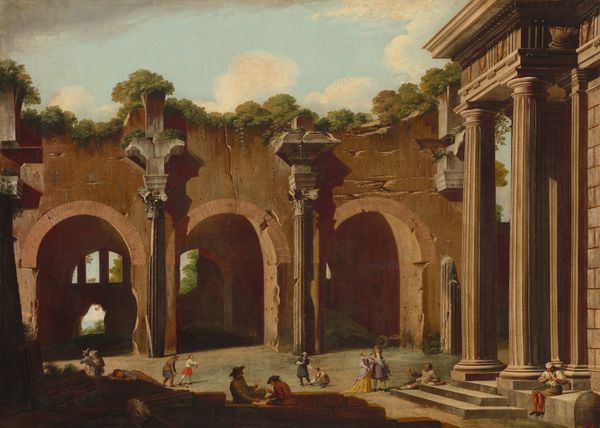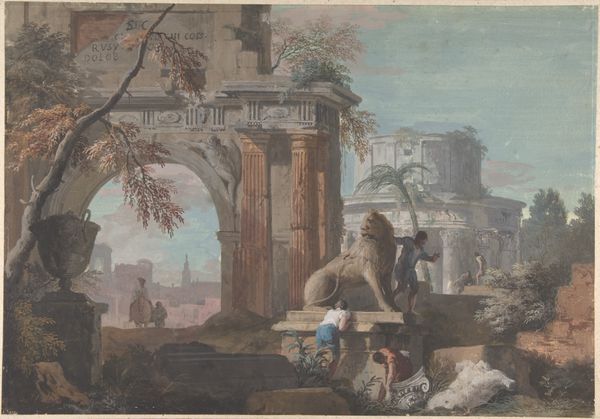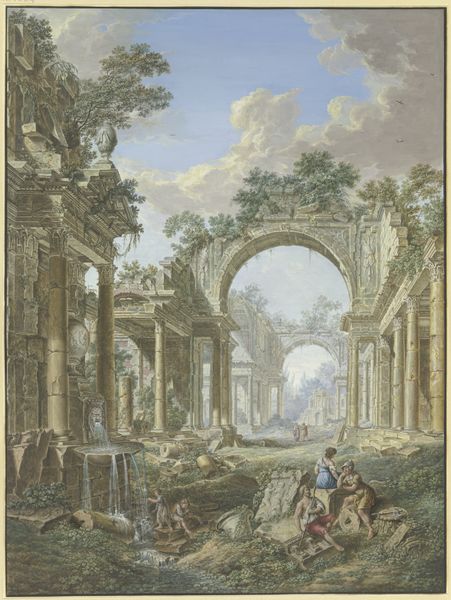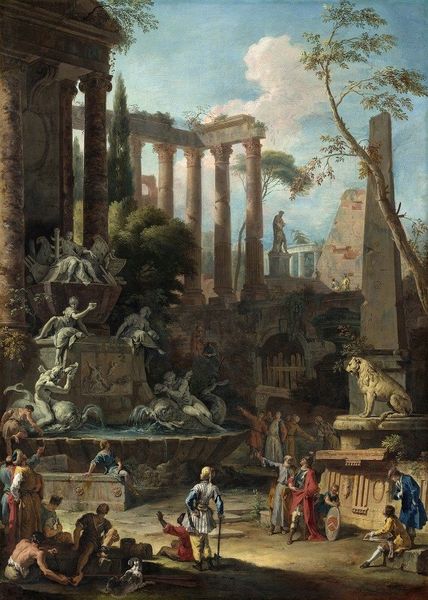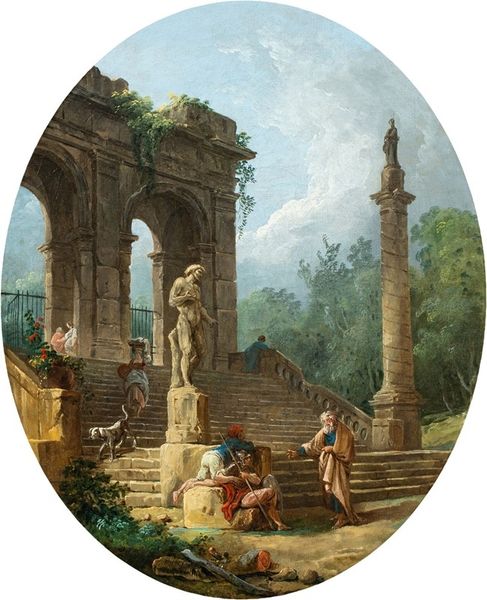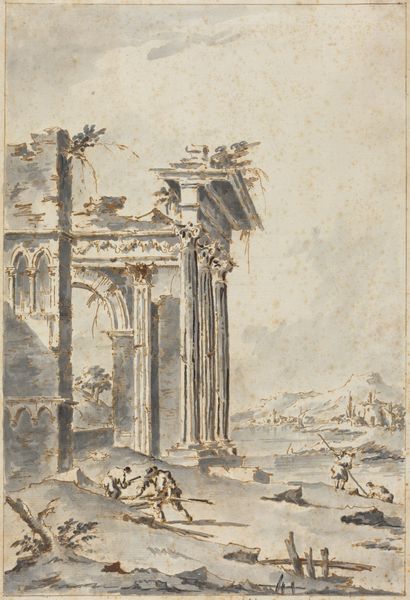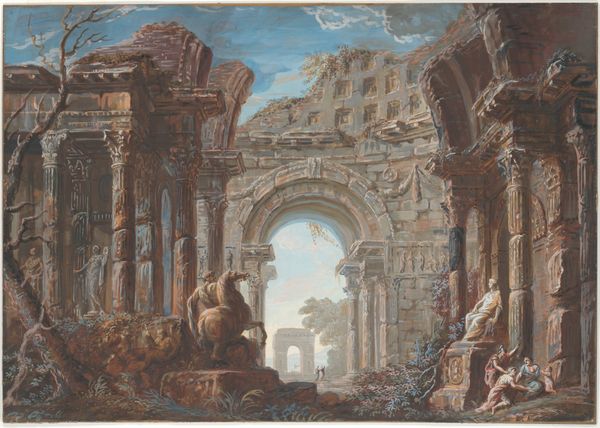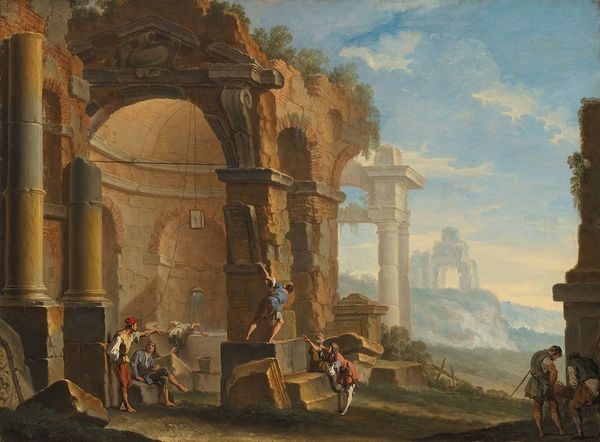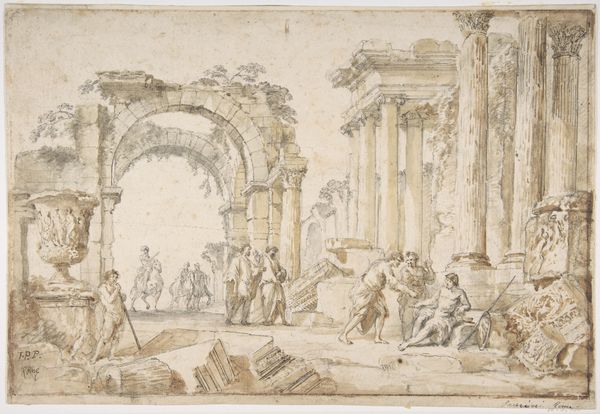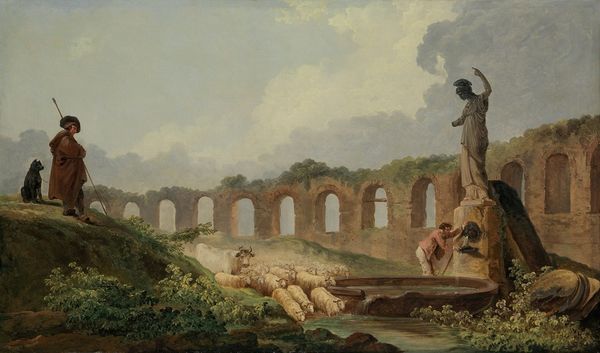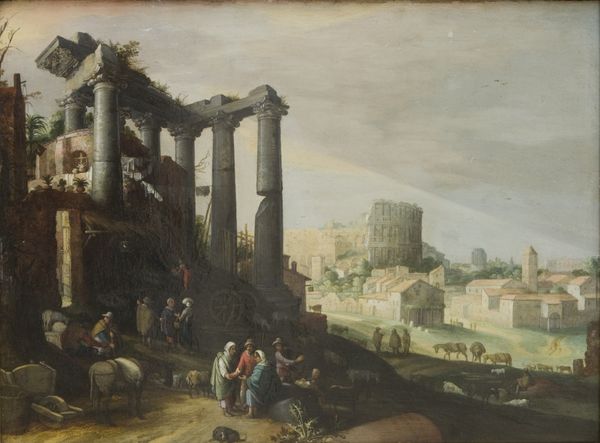
Dimensions: overall: 30.9 × 45.3 cm (12 3/16 × 17 13/16 in.)
Copyright: National Gallery of Art: CC0 1.0
Marco Ricci painted this capriccio of Roman ruins in the 18th century, using gouache and watercolor over black chalk on paper. Dominating the scene are the crumbling arches and the equestrian statue, symbols of Roman imperial power now softened by time and decay. The equestrian statue, a motif echoing the power of the Caesars, reminds us of the Marcus Aurelius statue—a powerful, unbroken symbol of Roman authority. Yet here, the scene is one of peaceful decay. This mirrors the "Sic transit gloria mundi" theme, reminding us that worldly glory is fleeting. We see this sentiment echoed through art history, from medieval allegories to modern meditations on mortality. The presence of the ruins touches something primal within us. The crumbling stones evoke the passage of time and the transience of human endeavor. They become a stage for the drama of human existence, eliciting feelings of nostalgia, melancholy, and even a sense of liberation from the weight of history. This cyclical progression highlights how symbols resurface, evolve, and take on new meanings across epochs.
Comments
No comments
Be the first to comment and join the conversation on the ultimate creative platform.
